{title}
{publish}
{head}
On an early April day this year, I went on a trip with Pham Quyen, a 68-year-old Vietnamese American originally from Quang Tri. This time, Quyen returned to Vietnam and asked me to take him back to his hometown in Gio Linh, especially to visit the historical and revolutionary sites that had been etched in his memory, such as Hien Luong Bridge, Vinh Moc Tunnels, the McNamara Line, and Quang Tri Ancient Citadel.
Along the way, Quyen recounted his memories of the war. In the late 1960s, stretching into the 1970s, he was still a child. Thanks to his self-taught English, he became a young interpreter for American soldiers. His memories were still filled with the smell of gunpowder and the dense presence of military outposts scattered across his homeland.
After settling in the United States, Quyen became acquainted with many American veterans who had fought in Vietnam, as well as former soldiers who once served in the South Vietnamese military apparatus. This time, many of them asked him to revisit and locate the sites where battles had once taken place. Inevitably, where there is war, there is sacrifice and loss, and beneath the peaceful land of today, there may still lie the remains of soldiers from both sides.

Pham Quyen (in black) takes Vu Dinh Lan to the location of C2 base - Photo: Xuan Hung
Quyen remarked, “Technology has advanced significantly now. American veterans say that modern bone detection devices can now help locate remains. They want to re-identify these places, hoping to return one day and search. Regardless of whose remains they are, from which side, it is worth doing so the souls can have a place to return to.”
From the Song Intersection, we made our way to Lam Lang, an area that witnessed intense battles between 1967 and 1971. It was a joy to meet Vu Dinh Lan, 84, who was a familiar face to my family.
Lan’s story is well-known in Quang Tri. There is a saying here, “First Ky, then Lan.” Ky refers to Nguyen Minh Ky, known as the “Grey Tiger of Route 9” during the war, who later served as Chairman of Quang Tri Provincial People’s Committee. Lan refers to Vu Dinh Lan, a fourth-class war invalid, former team leader of Cam Thuy Village’s task force during the war, whose mission was to coordinate with regular troops, local guerrillas, and civilian mobilization - a style of combat known as "grabbing the enemy by the belt."
Amid the harsh period of the war, Lan risked his life numerous times, achieving remarkable feats, including five titles of “American Killer Hero,” a Victory Medal from the National Liberation Front of South Vietnam, and a Third-Class Resistance Medal. Over a fragrant cup of green tea, Quyen and Lan reminisced about the battles that once raged in this area, now part of Cam Lo District.
The real story I want to tell begins here. Quyen recalled, and Lan confirmed, that the mid-1971 period was the most intense. Liberation forces and local troops launched powerful assaults on a series of military outposts along Route 9, reaching the McNamara Line. However, Lan was unaware of a crucial detail: the C2 base, manned by American troops, stood right on the land next to the Ho Chi Minh Trail in what is now Cam Tuyen Commune.
During the campaign to liberate Quang Tri, on May 21, 1971, the C2 base was shelled, killing dozens of American soldiers on the spot and wounding many others. This shelling inflicted such heavy losses on American troops that the press referred to it as the “Darkest Day” for the United States in the Vietnam War, specifically in the Demilitarized Zone (DMZ) of Quang Tri.
I had previously researched and found some information about this shelling. It was reported that 30 American soldiers were killed instantly, and 33 others were wounded. The shock was felt not only by the American soldiers but also by the U.S. government. The New York Times, in its May 22, 1971 edition, reported:
"Saigon, South Vietnam, Saturday, May 22 - Thirty American soldiers were killed and 50 others wounded in three rocket and mortar attacks in the northern combat zone of South Vietnam, U.S. Command announced today. The death toll exceeds all combat-related deaths reported in the previous week, in which the Command reported 24 killed and 240 wounded.
A Command spokesman, Major Charlie Johnson, said most of the casualties occurred at a base known as Charlie 2, which was tasked with protecting the DMZ. He noted that 15 rockets, each weighing 100 pounds, struck the compound at dusk yesterday, just as the troops were preparing to eat."
As of now, 54 years have passed. More than half a century has gone by, but the trauma of that shelling still haunts American veterans. Recently, a group of American veterans who survived the shelling recounted their experiences in a book titled "A Day in Hell on the DMZ."
At noon, I, along with Lan and Quyen, stopped by a roadside shop. Quyen bought a few incense sticks, a pack of biscuits, and a pack of cigarettes, then followed the Ho Chi Minh Trail northward to reach C2. The old hill has now been leveled, leaving only a few mounds. Surrounding it are lush green acacia and eucalyptus forests. Quyen lit incense on behalf of the American veterans who had requested it.

The New York Times, May 22, 1971 issue. The highlighted section is news about the shelling of C2 base - Photo: Xuan Hung
Lan also lit a few incense sticks around the site. I heard Lan say, “The war has long passed. These American soldiers were merely executors. The fault lies with the American government, not the American people. As humans, even though they were once enemies, we still light incense to comfort their souls. It is the duty of the living.”
I looked up. The sky over Quang Tri remained a peaceful, serene blue, with white clouds hanging in the azure sky on an April day. I thought, 50 years of peace is a long enough time for a lifetime to deeply understand the pain of war and the price of peace.
Telling the story of Hill C2 is not to reopen the wounds of the American soldiers who died and their families, nor to deepen the hatred between two nations. It is merely a reminder that war means suffering and loss. An unjust war leaves an even heavier burden of conscience, far greater than the physical losses.
The incense lit by Vu Dinh Lan at Hill C2, to me, symbolizes the long narrative of the post-war era. It serves as a reminder - a hyphen between war and peace - a message of humanity, not just for individuals but for a nation that values justice, never forgets, but is always willing to move forward.
Xuan Hung - Tung Lam

QTO - Not letting summer slip by in vain, many students in Quang Tri have taken the initiative to teach English to younger children. Through each lesson,...
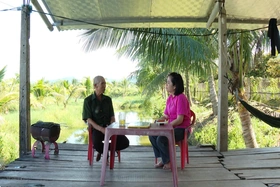
QTO - Returning from the northern border front with a 2/4 disability, it seemed his journey of service had come to an end. Yet, this wounded soldier began...

QTO - When I write these lines, my mother has already passed away. She now rests peacefully in the fields of her homeland, near the foot of Hien Luong...

QTO - "Drugs – a threat to the community. Stay away from drugs for the sake of future generations, for your own happiness, and for the well-being of your...

QTO - The Industrial Bank of Korea (IBK) will fund a VND1 billion (US$40,000) project to build a swimming pool at Cam Tuyen Primary and Secondary School in...

QTO - As a land rich in historical traditions with a diverse and abundant heritage of both tangible and intangible culture, Hai Lang District has...
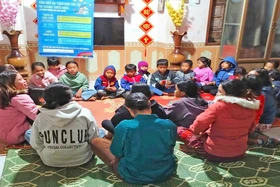
Childcare models play a crucial role in enhancing parenting skills, promoting gender equality, supporting early education, strengthening community engagement, and improving...
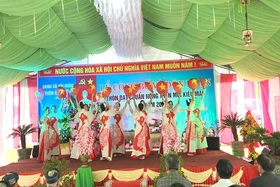
QTO - Visiting Lam Thuy Village, Hai Hung Commune, Hai Lang District these days, one can truly feel the remarkable transformation taking place. A...
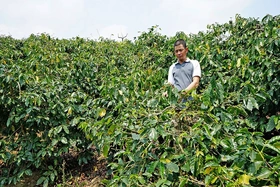
QTO - Quang Tri's coffee industry faces both significant challenges and promising opportunities as it navigates the implementation of the European Union's...
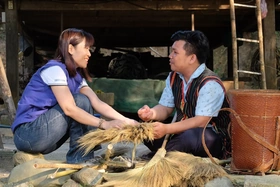
QTO - From November 16, 2023, to December 15, 2024, the central province of Quang Tri successfully mobilized 61 foreign non-governmental projects (NGOs),...
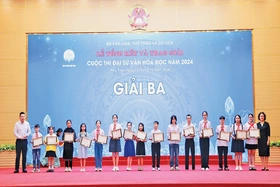
QTO - Despite being a student with severe mobility impairment, Hoang Duc Son from class 10A10 at Vinh Linh High School has traveled to many places through...
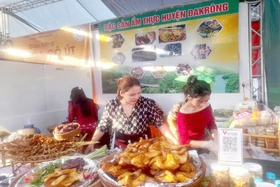
QTO - To effectively implement the national target program for socio-economic development in ethnic minority and mountainous areas from 2021 to 2025, the...